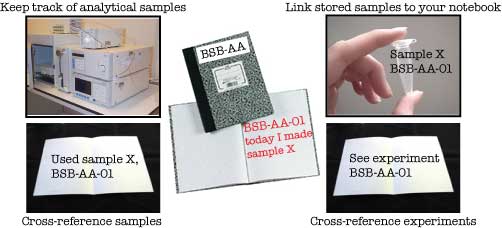The correct documentation and storage of your laboratory samples may be a tedious process, but it will make your life a lot easier in the long run. The last thing any scientist wants when trying to complete a key last experiment for a publication is not being able to find or identify a critical sample. When cataloging your samples, I suggest that you keep the following tips in mind:
- Label your samples properly. In clear handwriting, write your initials, date and experiment details on the eppendorf or falcon tube containing the experimental sample. Make sure it matches up exactly with what is in your lab book and that it is legible to both you and to everyone else. With eppendorfs, label both the top and sides. This will enable rapid identification of a sample when you open a storage box. Use a permanent waterproof marker or if your lab has an automatic labeling system take advantage of this.
- Prelabel tubes for consistency. When harvesting experimental samples, prelabel your collection tubes. This will enable efficient collection of your samples and allow you to store away perishable samples in a rapid manner.
- Keep a proper inventory in your laboratory. Get together a three ring binder divided into sections for 4ºC, -20ºC, -80ºC, liquid nitrogen etc. Print off templates that reflect the format of your storage boxes. As a further backup, keep an electronic copy on your computer. Pencil is useful for completing the paper copy of your inventory: if you remove and use up a sample you can simply erase the details leaving the space for a new sample.
- Keep it simple. Make sure your cataloging can be followed and understood by other lab members. A good test of this is when someone is out sick or on annual leave. If other colleagues can’t find that person’s samples, this indicates an issue with cataloging. If a staff member is leaving, the PI and at least one staff member should do a handover and ensure everything is easily located and identifiable. A scientist leaving a lab doesn’t necessarily mean the end of a project. Other scientists should be able to take over where they left off or return to the project at a later stage.
- Follow regulations. Make yourself familiar with any local guidelines regarding the documentation and storage of certain experimental material. There are often ethical and legal issues related to the documentation and storage of human and animal samples. These may be enforced by regular auditing by external and internal regulatory parties.
If you stay organized and implement a clear and concise cataloging system from day one, it will save you time and energy in the long run. Keep in mind also that you may need to return to experimental samples for further analysis months and or years after they were originally created.
What are your tips for cataloging samples?






